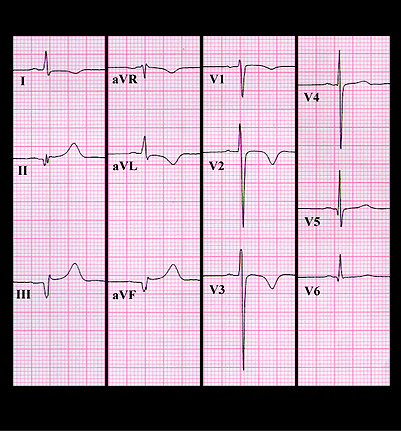
His ECG is shown again here. The rhythm is sinus and the PR interval is normal. The QRS duration is at the upper limit of normal (0.10 seconds). There is a prominent Q wave in leads II, III and aVF, and the T waves are inverted in leads V2 and V3. These findings suggest a prior inferior infarction. However, their presence in a young patient with the described heart murmur and a history of dizziness should suggest the possibility of hypertrophic cardiomyopathy with asymmetric septal hypertrophy causing intermittent obstruction of the aortic outflow tract and the Q waves that mimic an infarction. The echocardiographic findings confirmed this diagnosis.
